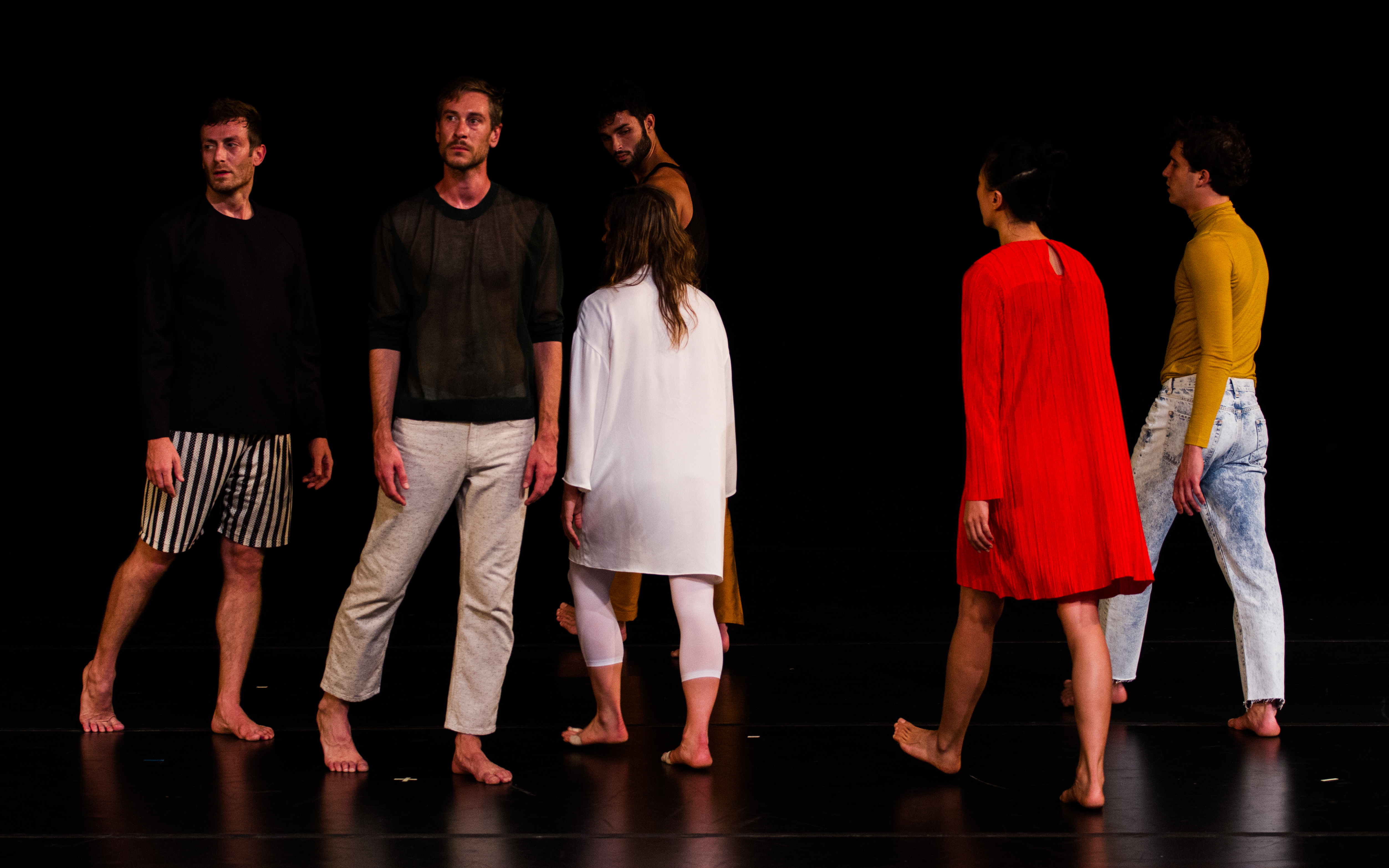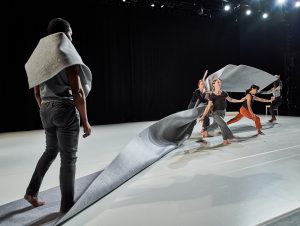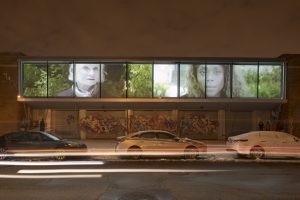Part of the difficulty in writing about dance lies in its position along a continuum from literalness to abstraction. The gestures of everyday life might be visibly exaggerated to aid transmitting a story to its audience, or else they might constitute a departure from this story altogether — stripped of its necessary context, the meanings of a given movement proliferate without end. It is such proliferation that fascinates choreographer Tere O’Connor, whose program notes for Long Run suggest that the means for its interpretation are “subsumed into layers of the work and de-emphasized”. Furthermore, when such interpretation does occur (as it must, in an exchange between the dancers and their audience), it should always be provisional: a “fluid and forever open-ended” assignment of possible meanings, to be radically altered as each movement is performed anew.
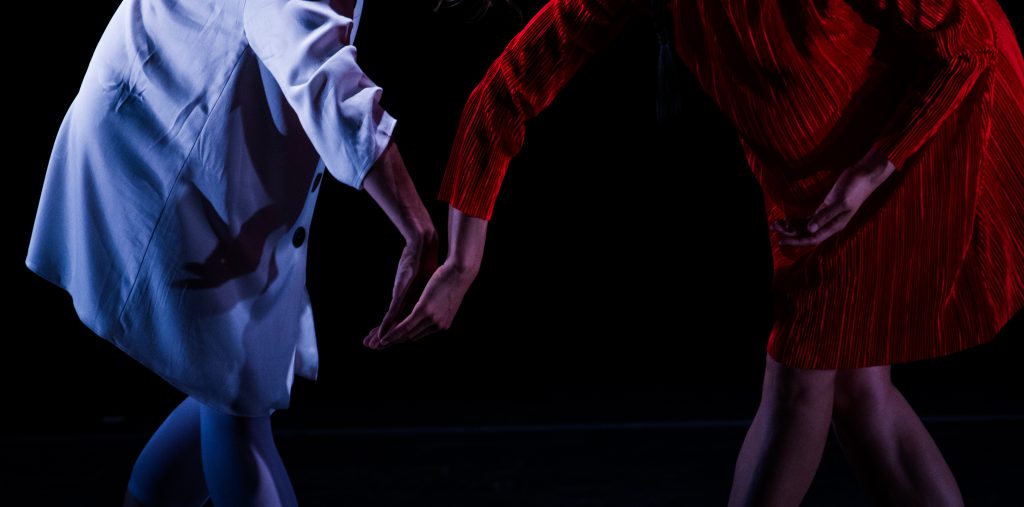
But after dancer Jin Ju Song-Begin performs a brief solo, the piece starts with a group dance to some of the most rhythmic music in the entire score (all composed by O’Connor himself), and for a moment our informed impulse to bypass the conventions of concert dance are swept aside by the pleasure of watching the architecturally complex, repetitive patterns of clearly defined shapes, cut with utter deliberateness by the eight absolutely masterful dancers. This doesn’t last long, though — soon the group is stumbling with awkward grace around the stage, making small gestures of hesitation or uncertainty in abrupt contrast to the confidence of their entrances, herding their fellow dancers up to the front of the stage to plop them staring sheep-like at their audience. There’s an improvisational quality to this material despite the fact that it’s also very tightly rehearsed, with gestures that might otherwise appear throwaway (a flick of the wrist, a near-yawn) timed exactingly within a broader score.
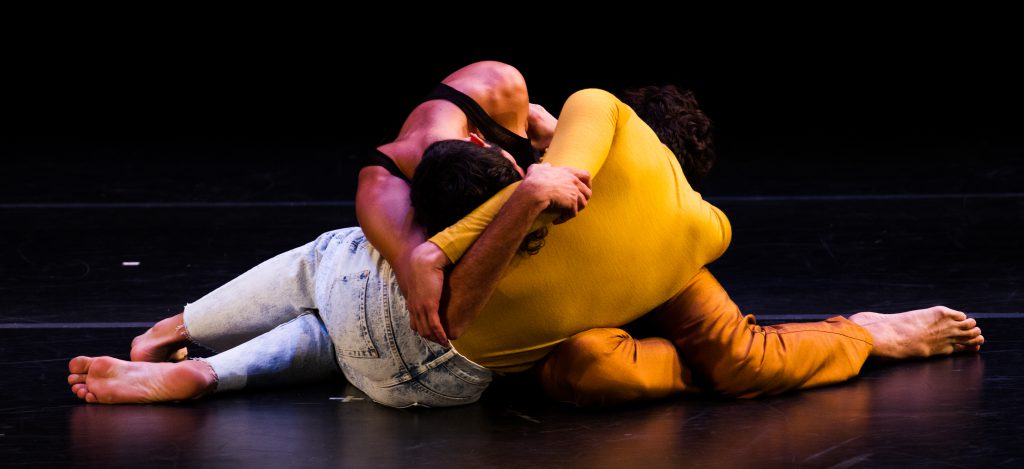
To say these movements exist in a clear relation, though, means something different within the logic of Long Run. Each dancer has a sequence of gestures which crop up multiple times throughout the piece. Sometimes performed as a solo or duet, then mirrored by the group or referenced in fragmented pieces in different facings; these gestures often flirt with a certain degree of literalness. A circle of the hand with two fingers held together, a tabletop space-hold with the arms rotated in either direction, a longing gaze upwards towards the sky: here is the subsumed interpretation of gestures we ourselves might have once performed, accruing referents as it is repeated (one hopes) unendingly. If the normal duration of an evening-length work is one of the constraints which O’Connor hopes to demonstratively subvert in his choreography, so too is the architecture of the stage: formations often just barely slip into the wings before heading back towards the action, and when the dancers paw upwards at the air in one section, they gesture towards a series of scrims which have been subtly lowered into the space.
This brings us to one of the potential functions of the impulse for narrative which O’Connor eschews — it serves as an anchor for ideology; religious, social, or otherwise. Though in offering an interpretation for Long Run I realize I am going against the very mandates of the piece, one might view the dogged repetition of its material as a reflection of the self-perpetuating nature of such ideology, as well as the possibilities for freedom offered by its removal from a shared space. One useful etymological reference might be the concept of anarchy, whose Greek root ‘arche’ implies primacy, essence, or the origin of an action as well as its later extrapolation to the state or governing body. The material sampled for Long Run’s score also seems to imply a degree of concern for the body as a kind of political fodder: one of the most disturbing sections features a loud jet-engine, repeating and eventually diminishing as the dancers revise a previous phrase.
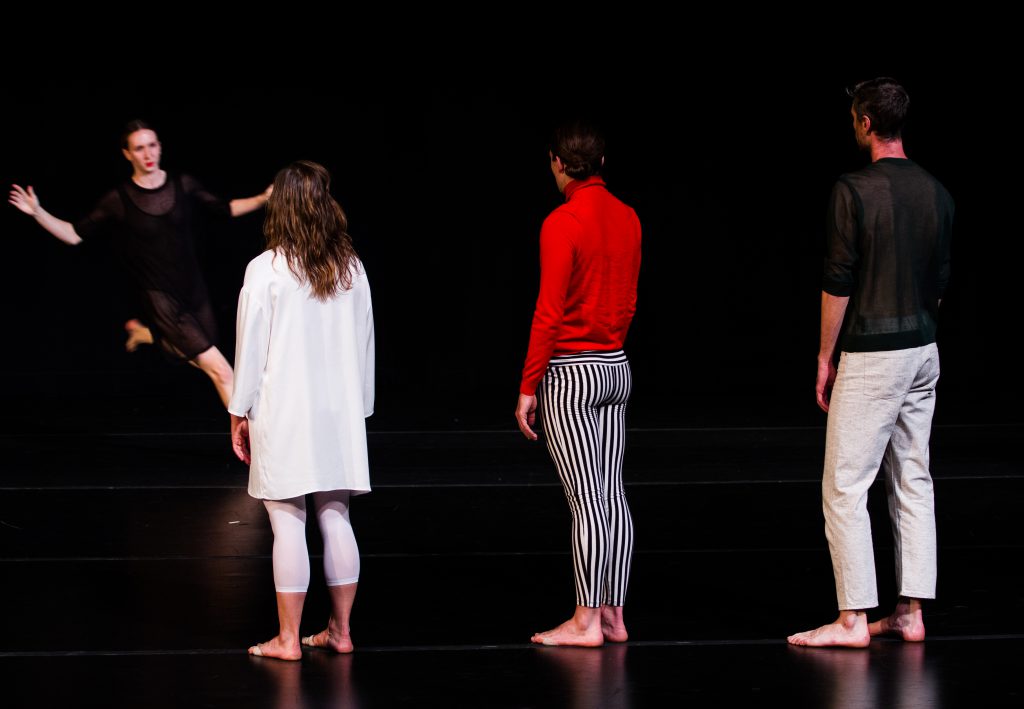
To watch Long Run is to feel unmoored, yet strangely comfortable in one’s new surroundings. Each dancer’s individuality is honored in O’Connor’s work, and it is a pleasure to navigate the complexity of his demands alongside such skilled movers. Long Run ends with a gesture towards the infinite recursion that it can’t literally embody as a piece of dance. Its continuity, then, might lie in in the “inner terrain” of its audience: and it is this landscape that O’Connor unendingly teases out.
Featured Image: Performing on a black stage with a black backdrop, dancers Simon Courchel, Lee Serle, Marc Crousillat, Eleanor Hullihan, Jin Ju Song-Begin, and Joey Loto perform in Tere O’Connor’s Long Run. Courchel, Serle, and Crousillat look to the side over their left shoulders while Hullihan, Song-Begin, and Loto pass through them in a diagonal formation. Photographer: Chris Kayden. Courtesy of Live Arts Bard.
 Maddie Kodat is a dancer and writer working between Chicago and New York City. They have performed with Ballez, Forced into Femininity, Liai, and Ginger Krebs, among others. Their work has been published in WINDOW, Glass Press of the Future, and The Zahir Review. Maddie received a BFA in Studio Art and a BA in Visual/Critical Studies from the School of the Art Institute of Chicago in 2017, prior to which they danced as a company member with Ballet Chicago for five years.
Maddie Kodat is a dancer and writer working between Chicago and New York City. They have performed with Ballez, Forced into Femininity, Liai, and Ginger Krebs, among others. Their work has been published in WINDOW, Glass Press of the Future, and The Zahir Review. Maddie received a BFA in Studio Art and a BA in Visual/Critical Studies from the School of the Art Institute of Chicago in 2017, prior to which they danced as a company member with Ballet Chicago for five years.
